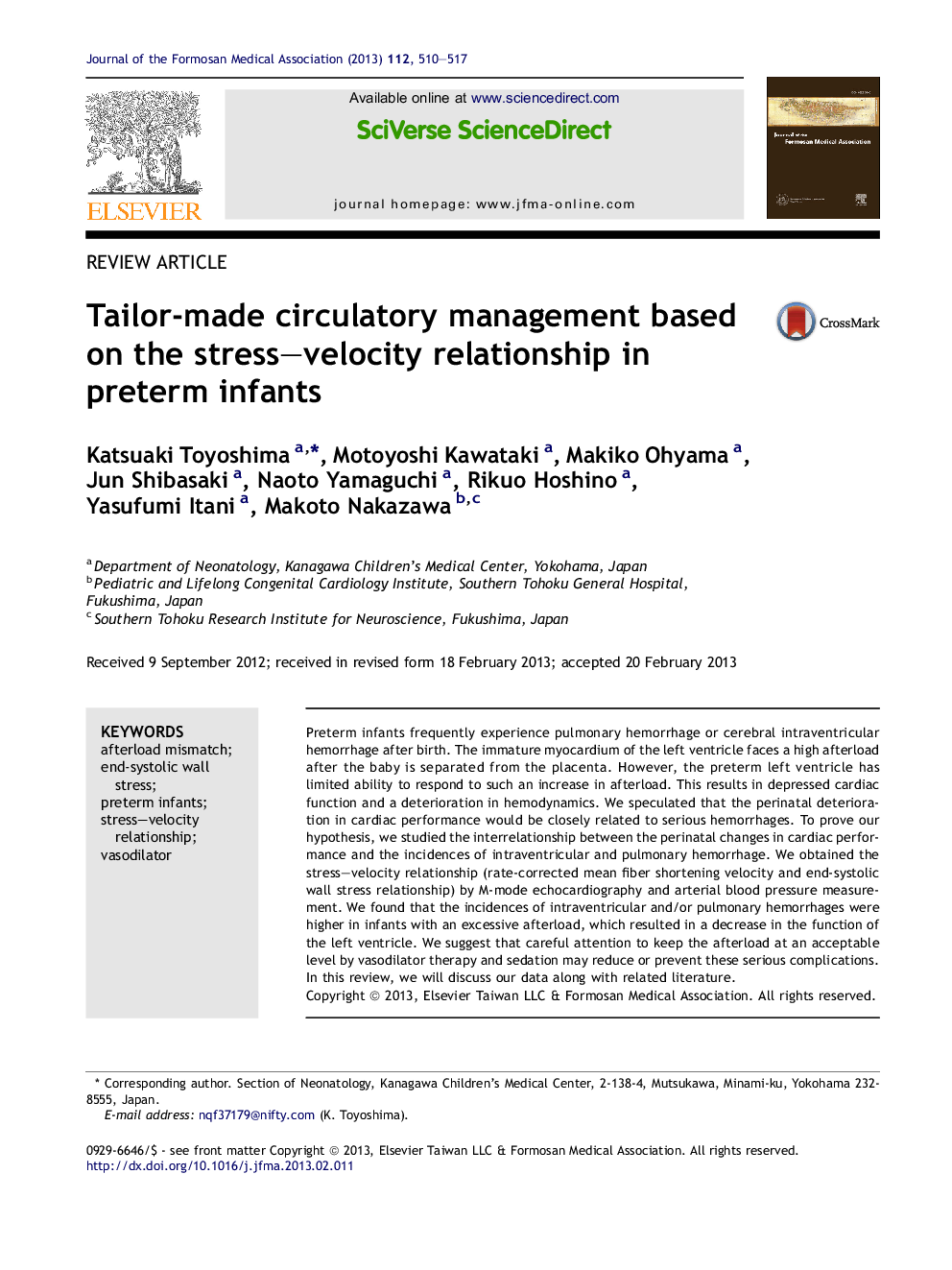| Article ID | Journal | Published Year | Pages | File Type |
|---|---|---|---|---|
| 3478742 | Journal of the Formosan Medical Association | 2013 | 8 Pages |
Preterm infants frequently experience pulmonary hemorrhage or cerebral intraventricular hemorrhage after birth. The immature myocardium of the left ventricle faces a high afterload after the baby is separated from the placenta. However, the preterm left ventricle has limited ability to respond to such an increase in afterload. This results in depressed cardiac function and a deterioration in hemodynamics. We speculated that the perinatal deterioration in cardiac performance would be closely related to serious hemorrhages. To prove our hypothesis, we studied the interrelationship between the perinatal changes in cardiac performance and the incidences of intraventricular and pulmonary hemorrhage. We obtained the stress–velocity relationship (rate-corrected mean fiber shortening velocity and end-systolic wall stress relationship) by M-mode echocardiography and arterial blood pressure measurement. We found that the incidences of intraventricular and/or pulmonary hemorrhages were higher in infants with an excessive afterload, which resulted in a decrease in the function of the left ventricle. We suggest that careful attention to keep the afterload at an acceptable level by vasodilator therapy and sedation may reduce or prevent these serious complications. In this review, we will discuss our data along with related literature.
